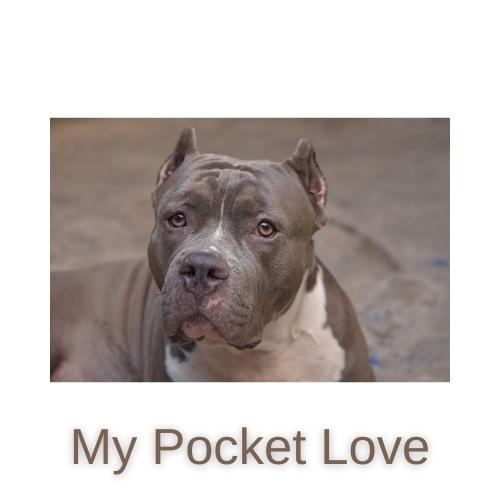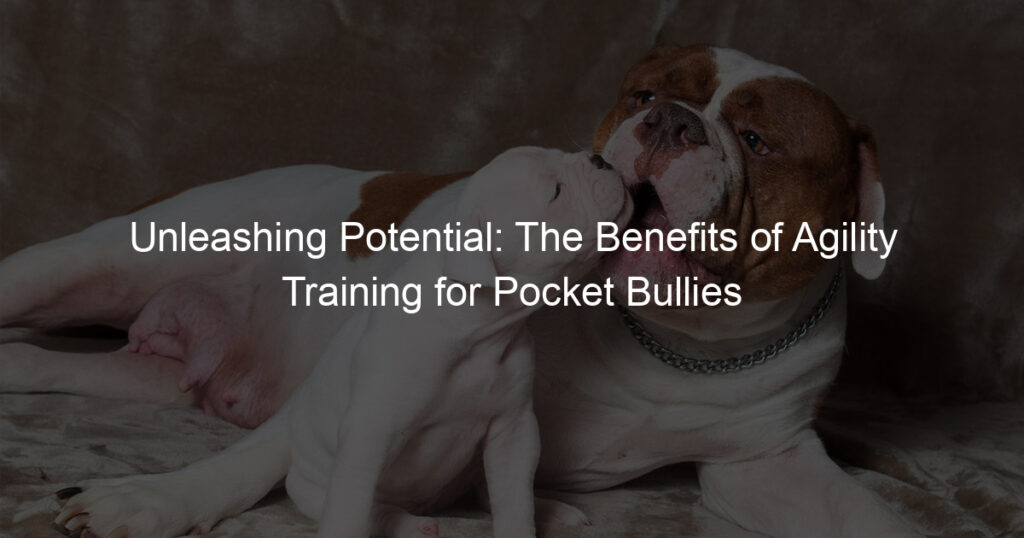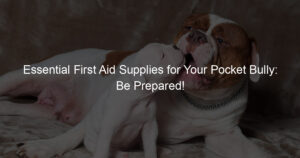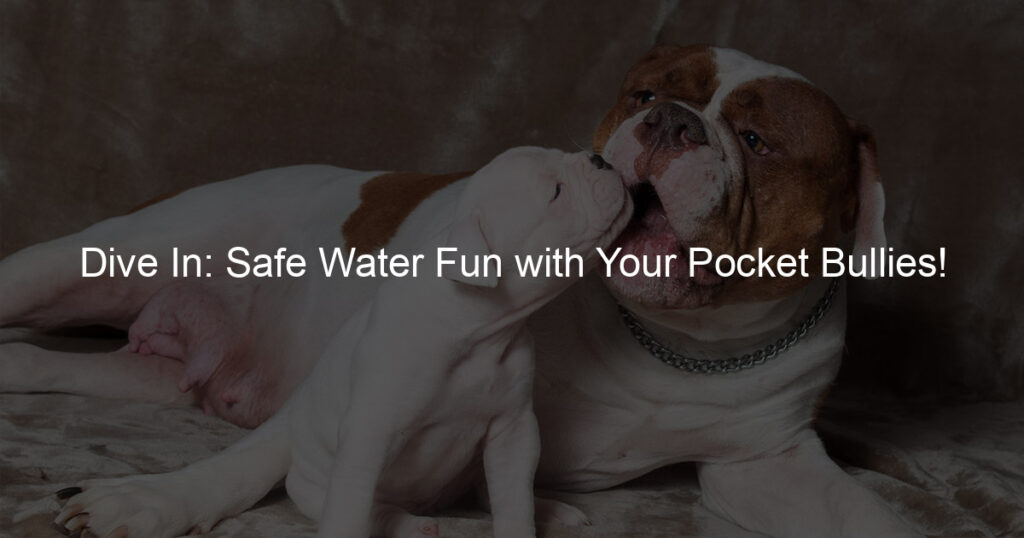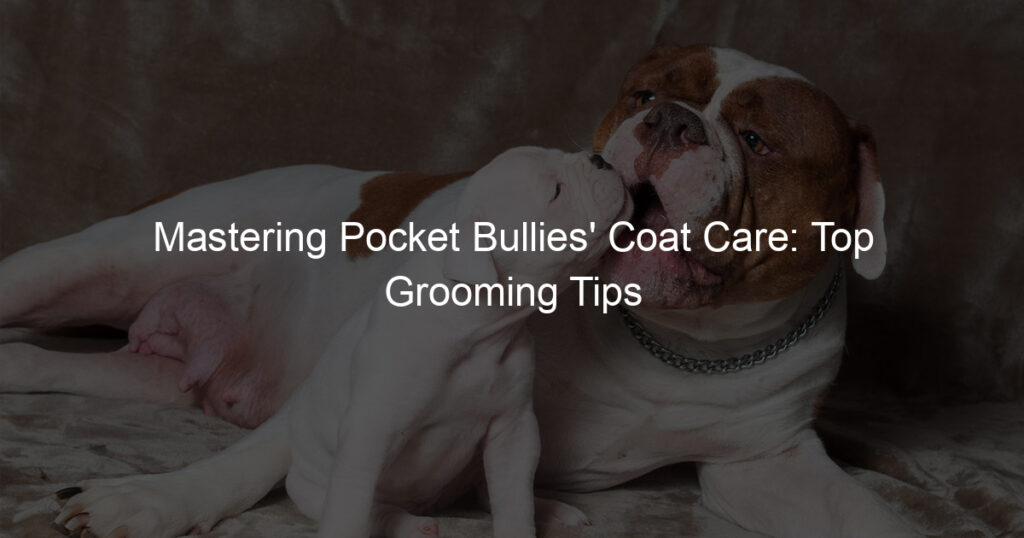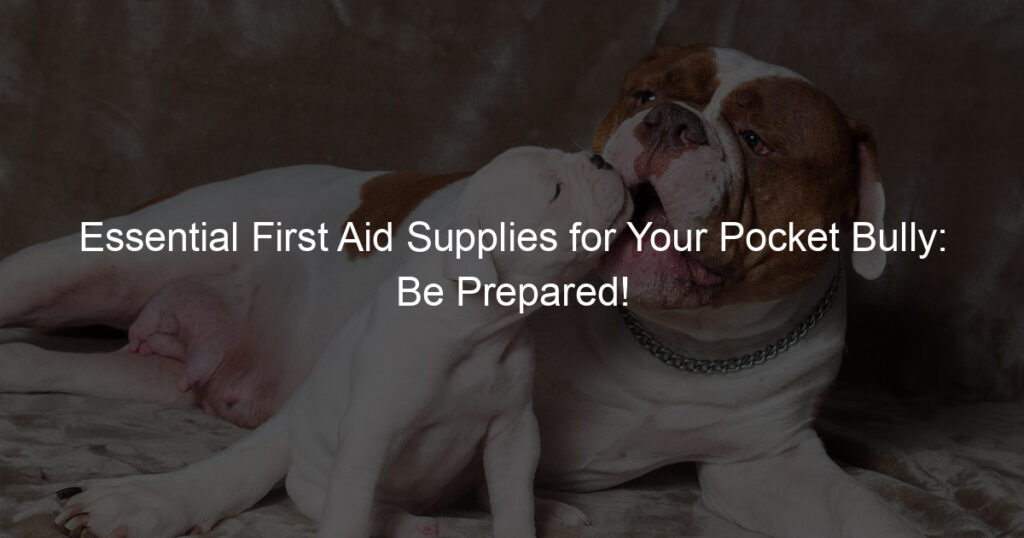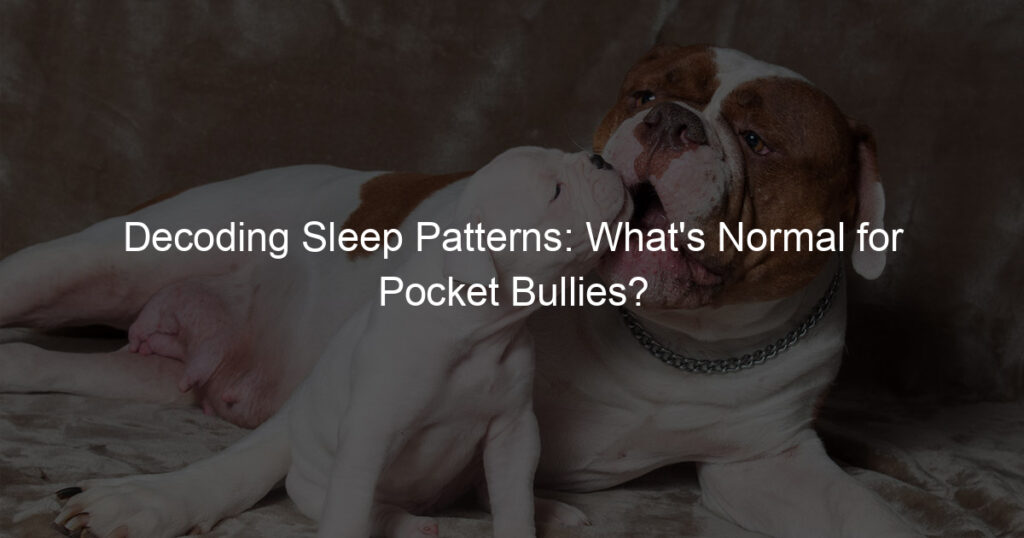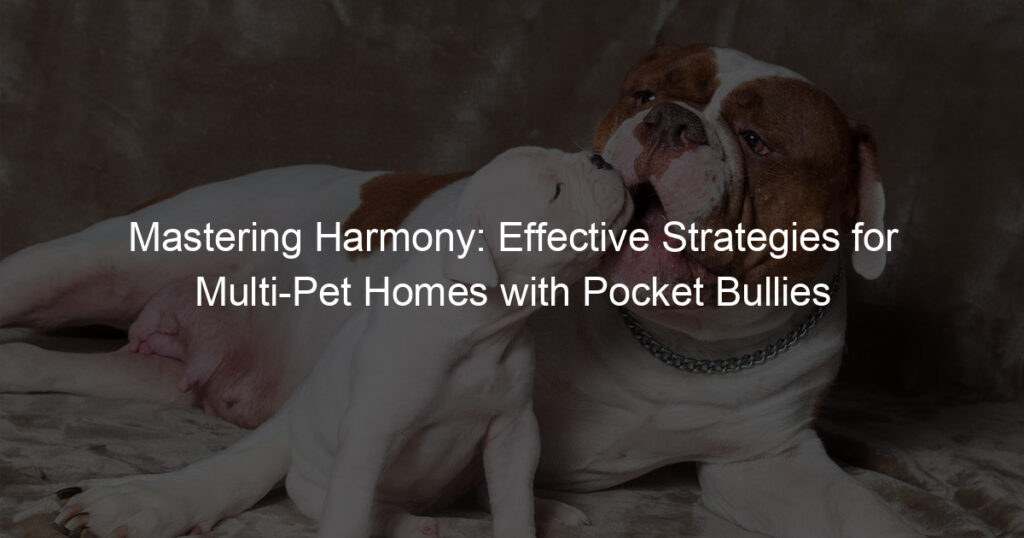
Introduction to Agility Training for Pocket Bullies
Agility training is a fun and rewarding activity that can greatly benefit both you and your Pocket Bully. This introductory guide will help you understand the concept of agility training and why Pocket Bullies are especially suitable for it.
- Understanding the concept of agility training
- Why Pocket Bullies are suitable for agility training
Agility training is a type of dog sport that involves directing your dog through a variety of obstacles such as tunnels, jumps, and weave poles. The goal is not only to complete the course as quickly as possible but also with the fewest mistakes. This requires a strong bond and excellent communication between the dog and the handler. It’s a great way to keep your dog physically fit and mentally stimulated, and it’s also a lot of fun!
Pocket Bullies, despite their compact size, are known for their strength, energy, and agility. They are intelligent dogs that are eager to please their owners, which makes them excellent candidates for agility training. Their size allows them to navigate through obstacles with ease and their muscular build provides the strength needed for jumps and climbs. Moreover, agility training can help channel their energy in a positive way and strengthen the bond between you and your Pocket Bully.
Now that we’ve introduced the concept of agility training and why Pocket Bullies are suitable for it, let’s delve deeper into the benefits of agility training and how to get started with your Pocket Bully.
The Benefits of Agility Training
Agility training is more than just a fun activity for your Pocket Bullies. It offers numerous benefits that can significantly improve their quality of life. Let’s take a closer look at these benefits:
- Physical Health Benefits
Agility training is a fantastic way to keep your Pocket Bullies in top shape. It involves a lot of running, jumping, and weaving, which helps to build muscle strength and improve cardiovascular health. Plus, it can help to keep their weight in check, reducing the risk of obesity and related health issues. According to a study by the Association for Pet Obesity Prevention, approximately 56% of dogs in the United States are overweight or obese. Agility training can be a fun and effective way to combat this issue.
- Mental Stimulation and Emotional Benefits
Agility training is not just physically demanding; it’s also mentally challenging. Your Pocket Bullies need to learn and remember the course, which helps to keep their minds sharp. This kind of mental stimulation can reduce the risk of cognitive decline and improve overall brain health. Moreover, agility training can also boost your dog’s confidence and reduce anxiety levels. Successfully navigating an agility course can give them a sense of accomplishment, which can lead to improved emotional well-being.
- Improving the Bond Between Owner and Pocket Bullies
Agility training is a team sport. It requires clear communication and trust between you and your Pocket Bullies. As you work together to navigate the course, you’ll develop a deeper bond with your dog. This can lead to improved behavior, as your dog will be more likely to listen to your commands. Plus, it’s a great way to spend quality time together, strengthening your relationship.
In conclusion, agility training offers a wide range of benefits for both you and your Pocket Bullies. It’s a fun, challenging activity that can improve physical health, provide mental stimulation, and strengthen the bond between you and your dog. So why not give it a try?
Getting Started with Pocket Bullies Training
Training your Pocket Bullies can be an exciting journey. Before we dive into the training techniques, it’s crucial to understand your Pocket Bullies. This will help you tailor your training approach to their unique needs and characteristics.
Understanding Your Pocket Bullies
Pocket Bullies are a unique breed with their own set of traits and exercise needs. Understanding these aspects will help you create a training routine that’s both effective and enjoyable for your dog.
- Recognizing the unique traits of Pocket Bullies
- Understanding the exercise needs of Pocket Bullies
Pocket Bullies are known for their muscular build, short stature, and friendly demeanor. They are intelligent and eager to please, making them great candidates for agility training. However, they can also be stubborn at times, so patience and consistency are key when training.
Pocket Bullies are energetic and require regular exercise to stay healthy and happy. They need at least an hour of exercise each day, which can include walks, playtime, and agility training. Remember, a tired dog is a good dog, and regular exercise can help reduce behavioral issues.
Now that you understand your Pocket Bullies better, you’re ready to start setting up for agility training. In the next section, we’ll discuss how to create a safe and conducive training environment, choose the right agility training equipment, and prepare your Pocket Bullies for training.
Setting Up for Agility Training
Before you start agility training with your Pocket Bullies, you need to set up the right environment and prepare your dogs. Here are the steps you should follow:
- Creating a safe and conducive training environment
- Choosing the right agility training equipment
- Preparing your Pocket Bullies for training
First and foremost, safety should be your top priority. The training area should be spacious enough for your Pocket Bullies to move around freely. It should be free from any dangerous objects that could potentially harm your dog. A soft grassy area or a non-slip indoor flooring would be ideal. Make sure the area is fenced or enclosed to prevent your dog from running off. It’s also important to ensure that the training area is quiet and free from distractions, so your dog can focus on the training.
Next, you need to choose the right equipment for agility training. This includes hurdles, tunnels, weave poles, and pause tables. The equipment should be sturdy, safe, and appropriate for the size of your Pocket Bullies. Remember, the goal of agility training is not just to improve your dog’s physical abilities, but also to enhance their confidence and mental agility. Therefore, the equipment should be challenging, but not too difficult for your dog to handle.
Before starting the agility training, make sure your Pocket Bullies are in good health and ready for the physical demands of the training. Start with a warm-up session to get their muscles ready and to prevent injuries. Use positive reinforcement methods to motivate your dogs during the training. Treats, praises, and toys can be effective rewards. Remember, the training should be fun for your dogs. If they seem stressed or uncomfortable, it’s best to take a break and try again later.
In conclusion, setting up for agility training involves creating a safe and conducive environment, choosing the right equipment, and preparing your Pocket Bullies physically and mentally. With the right preparation, your dogs will be ready to enjoy and benefit from the agility training.
Agility Training Techniques for Pocket Bullies
Agility training is a fun and rewarding activity for both you and your Pocket Bully. It not only provides physical exercise but also stimulates their mind. Let’s explore some basic and advanced techniques that can help your Pocket Bully become more agile.
-
Basic Agility Training Techniques
Before diving into more complex exercises, it’s important to start with the basics. Here are some simple techniques to get your Pocket Bully started with agility training:
- Start with Short Walks: Begin by taking your Pocket Bully on short walks. This will help build their stamina and get them used to physical activity.
- Introduce Obstacles: Start introducing small obstacles like cones or low bars for your Pocket Bully to navigate around or jump over. This will help them understand the concept of agility training.
- Use Treats as Motivation: Treats can be a great motivator for your Pocket Bully. Use them to encourage your dog to complete the exercises.
-
Advanced Agility Training Techniques
Once your Pocket Bully is comfortable with the basic exercises, you can start introducing more advanced techniques. Here are some suggestions:
- Teach Directional Commands: Teaching your Pocket Bully directional commands like ‘left’, ‘right’, ‘over’, and ‘under’ can help them navigate more complex obstacle courses.
- Introduce More Challenging Obstacles: Start introducing more challenging obstacles like tunnels, seesaws, and high jumps. Make sure to increase the difficulty gradually to avoid overwhelming your dog.
- Practice Regularly: Consistency is key in agility training. Make sure to practice regularly to help your Pocket Bully improve their skills.
Remember, the goal of agility training is not just to improve your Pocket Bully’s physical abilities, but also to strengthen your bond with them. Always make sure the training sessions are fun and rewarding for your dog.
Improving Agility in Pocket Bullies
Improving the agility of your Pocket Bullies requires a combination of regular exercise, consistent training, and a well-balanced diet. In this section, we will focus on the role of regular exercise and training in enhancing your dog’s agility.
Regular Exercise and Training
Exercise and training are crucial components in improving your Pocket Bullies’ agility. They not only help in keeping your dog physically fit but also mentally stimulated. Let’s delve into the importance of consistency in training and how to create a training schedule.
- Importance of consistency in training
- Creating a training schedule
Consistency is key when it comes to training your Pocket Bullies. It’s not enough to train your dog once and expect them to remember everything. Regular and consistent training sessions help your dog understand what is expected of them and improve their agility over time. According to a study, dogs trained consistently showed a 60% improvement in their agility compared to those trained irregularly.
Creating a training schedule is a great way to ensure consistency in your dog’s training. A good training schedule should include daily exercise sessions, agility training sessions, and rest days. Here’s an example of a weekly training schedule:
| Day | Activity |
|---|---|
| Monday | Exercise + Agility Training |
| Tuesday | Rest |
| Wednesday | Exercise + Agility Training |
| Thursday | Rest |
| Friday | Exercise + Agility Training |
| Saturday | Rest |
| Sunday | Exercise + Agility Training |
Remember, the goal is to improve your dog’s agility, not to exhaust them. So, make sure to include rest days in your schedule and adjust the intensity of the training sessions based on your dog’s age, health, and fitness level.
Proper Nutrition
Just like humans, Pocket Bullies also need a balanced diet to maintain their health and agility. The right diet can significantly improve their performance in agility training. Let’s delve into the role of diet in enhancing agility and the recommended diet for Pocket Bullies.
- Role of Diet in Improving Agility
- Recommended Diet for Pocket Bullies
Proper nutrition plays a critical role in improving a Pocket Bully’s agility. A well-balanced diet provides the necessary energy for the dog to perform agility exercises and helps in muscle recovery after training. It also helps in maintaining an optimal weight, which is crucial for agility. Overweight dogs may struggle with agility exercises, while underweight dogs may lack the necessary strength and stamina.
Pocket Bullies require a diet rich in protein to build strong muscles. Foods like chicken, beef, and fish are excellent sources of protein. They also need a good amount of carbohydrates for energy. Brown rice and sweet potatoes are good sources of carbohydrates. Fruits and vegetables should also be included in their diet for vitamins and minerals. It’s also important to provide them with enough water, especially after training sessions.
| Food Type | Examples |
|---|---|
| Protein | Chicken, Beef, Fish |
| Carbohydrates | Brown Rice, Sweet Potatoes |
| Fruits and Vegetables | Apples, Carrots, Peas |
| Water | Always available, especially after training |
In conclusion, a balanced diet is essential for a Pocket Bully’s agility. It provides the energy required for training and helps in muscle recovery. Remember, every dog is unique, and what works for one may not work for another. Therefore, it’s always best to consult with a vet before making any significant changes to your Pocket Bully’s diet.
Case Studies: Success Stories of Agility Training for Dogs
Let’s take a closer look at some real-life examples of Pocket Bullies who have greatly benefited from agility training. These case studies will provide a clear picture of the transformation and health improvements that can be achieved through this training method.
-
Case study 1: Transformation of a Pocket Bullies through agility training
Meet Max, a 3-year-old Pocket Bullies. When Max’s owner first brought him to agility training, Max was a bit overweight and lacked energy. He also had a hard time following basic commands.
After just six months of agility training, Max’s transformation was remarkable. He lost weight, gained muscle, and his energy levels skyrocketed. Not only did he become more agile, but he also became more obedient and responsive to commands. His owner reported that Max seemed happier and more confident, demonstrating the mental benefits of agility training.
-
Case study 2: How agility training improved the health of a Pocket Bullies
Next, we have Bella, a 2-year-old Pocket Bullies. Bella was initially quite shy and anxious, especially around other dogs. Her owner decided to try agility training in hopes of improving Bella’s social skills and overall health.
After a year of regular agility training, Bella’s health improvements were evident. She lost her excess weight, her coat became shinier, and her anxiety levels decreased significantly. She also became more social and playful with other dogs. Bella’s owner was thrilled with the results and continues to incorporate agility training into Bella’s routine.
These case studies highlight the transformative power of agility training for Pocket Bullies. Not only does it improve their physical health, but it also enhances their mental well-being and social skills. If you’re considering agility training for your Pocket Bullies, these success stories should give you the confidence to get started.
Conclusion: Pocket Bullies Training Guide
In this guide, we’ve explored the world of agility training for Pocket Bullies. We’ve seen how this training can benefit these dogs and how you can get started with it. Let’s take a moment to recap what we’ve learned and highlight the key takeaways.
- Recap of the benefits of agility training for Pocket Bullies
- Key takeaways for successful agility training
Agility training is not just about teaching your Pocket Bullies to navigate through obstacles. It’s about enhancing their physical health, mental stimulation, and bonding with their owners. It can help them burn off energy, keep fit, and even reduce behavioral problems. Agility training also provides an excellent opportunity for socialization, which is crucial for this breed.
Successful agility training requires patience, consistency, and positive reinforcement. Start with simple obstacles and gradually increase the difficulty as your dog becomes more comfortable. Remember, the goal is to make training fun and rewarding for your Pocket Bullies. It’s also important to ensure your dog is physically fit for agility training, so regular vet check-ups are essential.
In conclusion, agility training is a wonderful way to enrich your Pocket Bullies’ lives and strengthen your bond with them. It may seem challenging at first, but with patience and persistence, you’ll soon see the benefits. Remember, every dog is unique, so what works for one may not work for another. Keep trying different techniques until you find what works best for your dog. Happy training!
